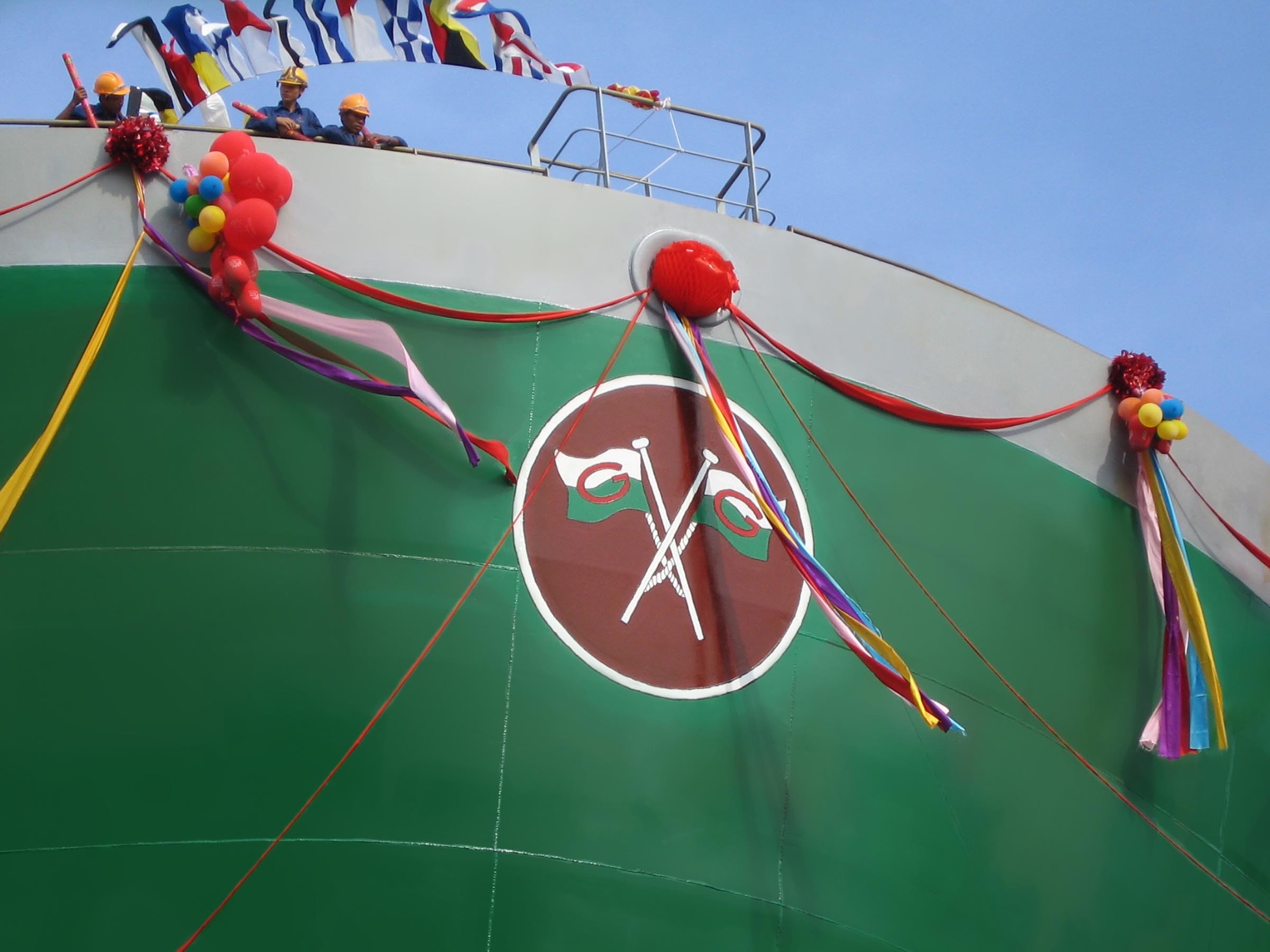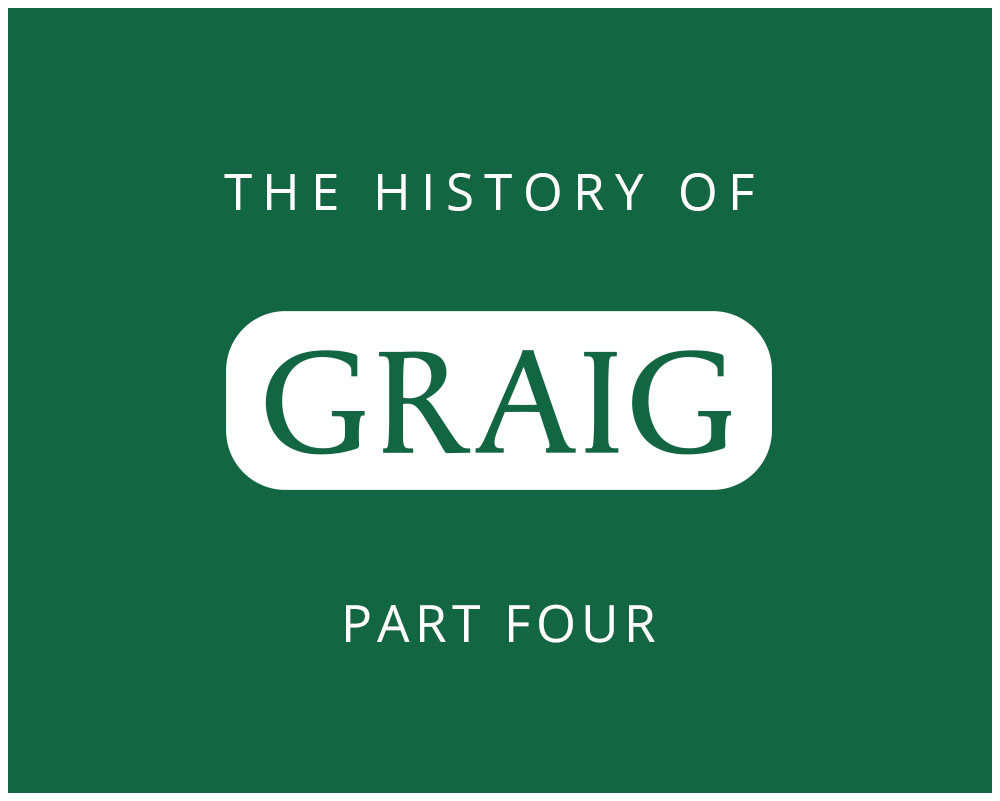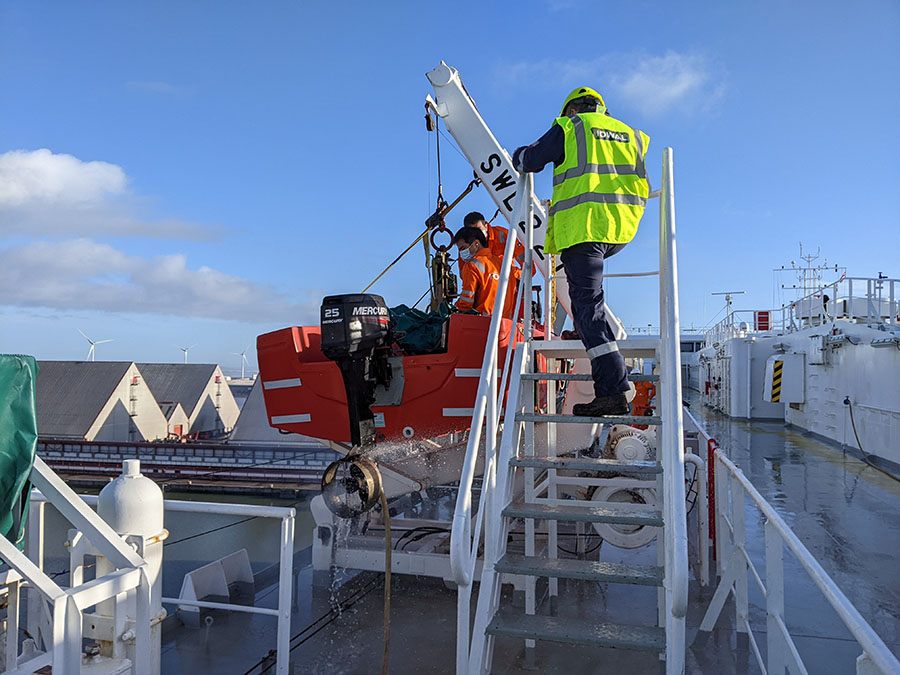Bulk carrier pioneers
The long depression in freight rates, which lasted from 1956 until 1963, led to a serious consideration amongst tramp shipowners regarding the type of ship that they needed for future trading purposes. Well into the early 1960s, diesel engines were being fitted into hulls whose basic outline, with engines amidships, had remained largely unchanged since the 1880s. Changes in this basic design were first observed in Welsh ports from 1955 onwards in the specialised iron ore carriers built to serve UK steelworks; built with engines and (later) superstructure aft, these vessels soon became regular visitors to Port Talbot, Cardiff and Newport. It was to take some time, however, before this design was adopted for most vessels operating in the world-wide bulk trades. For some time, Desmond Williams and Colum Tudball had been attempting to persuade Idwal Williams that the days of the 9,000 dwt ‘tween-deck deep-sea tramp were numbered and that it was imperative that Graig Shipping invested in something substantially larger, producing convincing figures to prove the benefits of such an investment. Idwal Williams demurred, however, unable to see how the company could afford the necessary capital.
This situation was transformed in 1963 when the government, realising the plight of both the shipbuilding and shipowning industries after a seven-year slump, announced a £30m. Shipbuilding Credit Scheme (later expanded to £75m.), which made available to shipowners a loan of 50% of the overall cost of a vessel built in an UK yard, repayable over a five year period at an interest rate of four and seven-eighths percent. Described by Desmond Williams as ‘a shot in the arm’ for Graig Shipping, the company immediately contacted a number of UK shipyards requesting quotes for vessels of up to 18,000dwt. Amongst the replies received in July 1963 was one from Scott’s Shipbuilding and Engineering yard at Greenock which, whilst working on the specific requirements requested by Graig, stated that they could offer to start construction work almost immediately on a 28,300dwt geared bulk carrier, one example of which, the Kapitan Georgis, they had already completed in February 1962 for Greek owner Stratis G. Andreadis. Graig gave an immediate positive response and Scott’s’ directors travelled down to Cardiff by sleeper overnight; by lunchtime the following day an agreement had been reached for the construction of a 28,500dwt bulk carrier, equipped with a Sulzer engine built under licence by Scott’s, for the sum of £1,225,000, with the assistance of a 50% loan under the Shipbuilding Credit Scheme. Given the name Graigwerdd, she was launched by Mrs Anne Williams, Desmond Williams’s wife, on 26 May 1964 and had the distinction of being the first bulk carrier to be built for Cardiff owners. She was followed in November that year by Reardon Smith’s slightly smaller bulker Australian City, also built on the Clyde, but at Fairfield’s Govan yard.
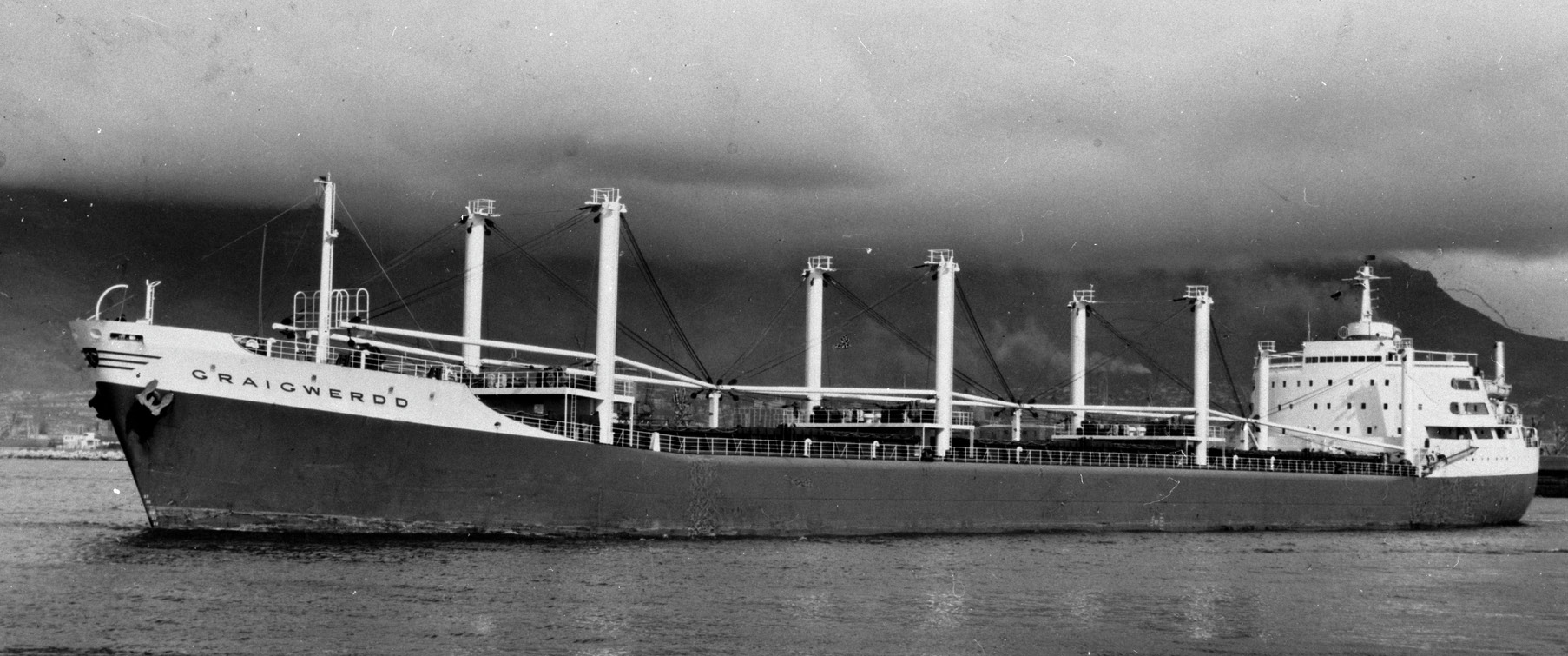
Graig’s first bulk carrier Graigwerdd
The Graigwerdd was soon trading profitably on an improved freight market and in 1965 the decision was taken to sell the earlier motor tramps Glynafon and Graigfelen; both were sold in a block deal to companies under the control of New York Greek shipowner G.T. Bacalakis in January 1966. At the same time an opportunity arose to acquire a newly-built 26,570 dwt geared bulk carrier then nearing completion for John Manners and Co. of Hong Kong by Japanese shipbuilders the Hakodate Dock Co. Ltd. of Hakodate; this was undertaken with the aid of a development of the Shipbuilding Credit Scheme which provided grants payable to UK shipowners on the purchase of new tonnage built anywhere in the world. Launched for Manners as the East Breeze on 24 January 1966, she became the property of the Glynafon Shipping Co. Ltd. the following month, and upon completion in March 1966 was given the name Glyntaf. As she already had a complete crew of Hong Kong Chinese deckhands, engine room ratings and catering staff, Graig simply added its own British officers, the first time that a company ship carried a non-UK crew.
The Shipbuilding Industry Act of 1967 increased the statutory limit on government shipbuilding guarantees to £200m and with this backing available it was decided to go back to Scott’s yard (by then in merger talks with the Port Glasgow shipbuilders Lithgows Ltd. to form Scott Lithgow Ltd.) for another bulk carrier similar to, but slightly larger than the Graigwerdd; she was also to be built with a bulbous bow. The order was placed in August 1967 and the 31,600dwt Graigffionwas launched on 5 September 1968 by Mrs G.F. Williams. However, the launch of the vessel coincided with the impending completion of the Queen Elizabeth 2 in John Brown’s yard further up the Clyde. Completion of the QE2 was behind schedule and in order to speed up the extensive fitting-out required in a luxurious passenger vessel, Brown’s offered (with government support) increased wages to joiners throughout the Clyde’s shipyards. This led to a dispute over pay parity in other Clyde-side yards, leading to a strike of Scott Lithgow’s joiners which had commenced in late August 1968; eventually, some 200 of them, claiming that they had been sacked, made the move to John Brown’s yard. The Graigffion was therefore left fully constructed, but without a single wooden fitting! So that they could comply with delivery clauses, Scott Lithgow’s had already sent a similar newly-completed bulk carrier, the Borgnes built for Norwegian owners Jebsens, to Norway for fitting-out, and this course of action was decided upon by Graig Shipping too. At a cost of £50,000 to Scott Lithgow the Graigffionwas towed to Oslo, where she was fitted-out; having run trials she arrived at South Shields to be registered as a British ship on 23 December 1968, just in time to qualify for her grant under the terms of the 1967 Act, whose terms changed on 1 January 1969.

Graigffion in service. [Malcolm Dippy/World Ship Society Ltd.]
Problem solving by Philip Thomas on the Graigwerdd
I always get a feeling of unease, even almost of foreboding when things are going along smoothly and there seems to be no trouble about. Such was the case when the Graigwerdd was about four days off Singapore where she was due to bunker [in February 1971]. Suddenly in the early hours of the morning she smashed her entablature. This was major disaster as the entablature is the bottom part of the main engine and is a large casting which takes a long time to manufacture. The vessel limped into Singapore and Philip Thomas flew out to view the situation. When he arrived he was confronted with total disaster – there were bits large and small everywhere – and the problem was so enormous, he felt the only thing he could do was to go back to his hotel, have dinner, go to bed and sleep on it.The following morning he went down to the ship, picked up one bit and tried to fit it to the next bit. It did fit and so it went on and he then wondered if they could possibly stitch the entablature together, then either weld it or hold it together with metal clamps until it made a whole – worth a try rather than a delay of nine to twelve months – and that is exactly what they did. Eventually they got it all together and tentatively did a test run with Lloyd’s surveyor in attendance. It worked, so they gave it a longer, more arduous, run. Eventually he agreed to give the ship a temporary certificate for three months, At the end of that time, Lloyd’s agreed to extend the certificate for a further three months, then it became six months, then a year and as far as we know that ship is still running happily with her stitched-up entablature!
From Seventy Years in Shipping by Desmond Williams (1989); the Graigwerdd was scrapped at Dalian in 1985.
By the time of her delivery, however, Graig Shipping had suffered a major loss with the death of the company’s principal founder, Idwal Williams, aged eighty-six. His had been a remarkable achievement – coming from humble origins, his thorough training with shipping companies in south Wales had given him a shrewd insight into the workings of the shipping market. This insight had enabled him to establish Graig upon a firm financial footing at a time when dozens of other shipping firms in south Wales were facing ruin, thus providing a firm foundation for future expansion. His place as company chairman was taken by his second son Desmond Williams, whilst Colum Tudball took his place as managing director. The company secretary, Keith Gowen, also joined the board on 11 June 1971.
Diversification
Under Desmond Williams’s chairmanship, Graig Shipping began to look at the potential benefits of investing in fields outside shipping to provide greater protection for shareholders against the inevitable fluctuations of the tramp shipping market. In July 1971 the Graig board was approached by a Canadian-led consortium of oil exploration companies who were interested in the exploration and exploitation of potential oil reserves in the Celtic Sea. Graig took an approximate one-sixth interest in the consortium, as well as a quarter interest in UK inland blocks being explored at the time near Reading. These aspects of Graig’s business would eventually come under the management of a new subsidiary company, Graig Exploration Ltd.
Further diversification took place during the following years. With Graig’s vessels visiting UK ports only rarely by the 1970s, crew changes made in ports across the world were proving increasingly costly. Accordingly it was decided to acquire an existing travel agency to reduce crew travel costs and an opportunity arose in 1972 to acquire Reigate Travel Ltd. of 67 Bell Street, Reigate, Surrey. Acquisition of this company not only enabled Graig to reduce crew travel costs substantially, but the firm also produced a small but steady profit as the popularity of foreign package holidays grew during the 1970s. Freehold property investments made in Kingston-upon-Thames also proved profitable, whilst trading on the commodity markets also brought valuable income to the company at that time.
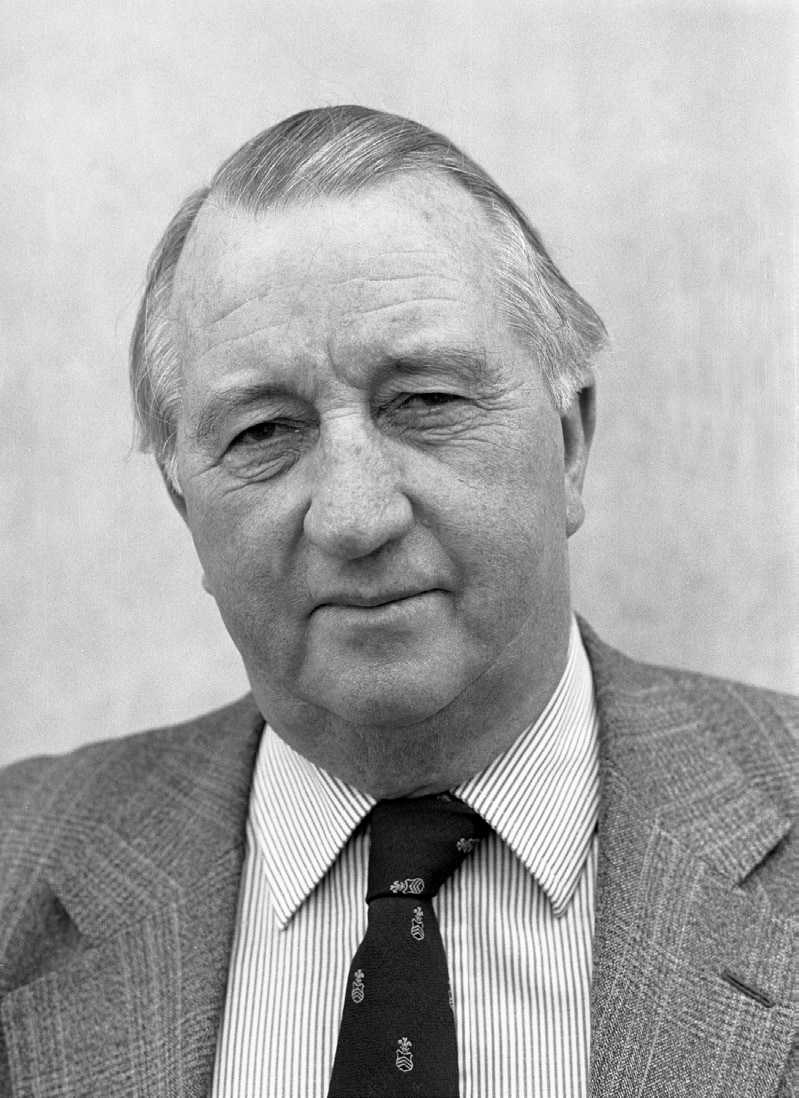
Desmond Williams, chairman of Graig Shipping from 1971 to 2009.
Whilst shipping remained the company’s core business, from the early 1970s onwards it is clear that there was also a move within Graig Shipping towards treating ships, not primarily as assets whose trading brought the company its chief source of income, but also as commodities, whose sale and purchase, correctly-timed, could realise considerable profits over very short periods of time. This was first seen in the acquisition early in 1972 by the Garth Shipping Co. Ltd. of the 36,000dwt bulker Cluden, completed by Fairfield’s of Glasgow in 1965 for Matheson and Co. Ltd. of Hong Kong; she was renamed Garthnewydd. Just eight months later this vessel, which had cost £1.5m., was sold to Greek owners for over £2m., showing a remarkable profit of £500,000 in such a short period, a return that simply could not have been achieved by trading the vessel over that same time. It was this, and similar subsequent successful purchase and sale deals, that led to Graig acquiring the nickname of ‘the Welsh Greeks’! Immediately following the sale of the Garthnewydd, an order was placed with Astilleros Espanoles S.A.’s Matagorda yard for a 53,000dwt gearless bulk carrier, with an option for a second identical vessel. World-wide grain shortages which emerged after poor harvests in the autumn of 1972 led to buoyant freight rates in trades to the Eastern Bloc at that time. As the other bulkers owned by the Graig companies were all on time charters at that time, it was deemed prudent to take advantage of this boom by the chartering-in for short periods of four other bulk carriers, the Dagland (37,960dwt), the Prag (42,758 dwt), the Thorsdrake (51,005dwt) and the Achilleus (37,353 dwt). Not since the Fort Covington had left the company’s management in 1950 had Graig Shipping managed chartered-in tonnage, and the chartering of these ships proved reasonably profitable. 1973 saw a notable break with the past in the company’s directorate; not only did Colum Tudball retire as Graig’s managing director, to be replaced by his son Peter, but on 8 November that year, Daniel Richards, who had left Furness Withy at the same time as Colum Tudball to join Idwal Williams, passed away.
A further profitable ship sale was effected in 1974 with the selling of the Graigwerdd – by then ten years old – to Greek interests at a sum nearly twice that paid for her in 1964. In her place, Graig Shipping purchased an entire Liberian shipping company, Cosmos Shipping and Trading Co. S.A. of Monrovia and its sole asset, a 26,598dwt geared bulk carrier, Torre del Oro, completed in November the previous year by Spanish shipbuilders, Astilleros Espanoles SA’s Seville yard. A Eurodollar loan from the Bank of England was obtained to cover the cost which was some 50% in excess of receipts for the sale of the Graigwerdd; however, as Desmond Williams stated in the 1974 annual report, ‘...we have replaced a ten-year old vessel with a virtually new one and we are hopeful that we will be able to earn the difference in price during the current year’. She was eventually transferred to the ownership of Graig Shipping in November 1974 and was given the name Graigaur (2).
The first of the two Spanish newbuildings was launched by Mrs. Carole Tudball on 23 March 1974 and was named Garthnewydd (2). Capable of washing herself down to load grain within six hours of discharging coal, she was to prove a successful and profitable vessel for the company. Her sister, the Graiglas (2) was launched by Mrs Pat Thomas on 31 October 1974, but in her case Graig’s directors decided to take their profit at the shipyard, accepting an offer for the vessel from the Indian Scindia Steam Navigation Co. Ltd. for a sum $1m in excess of her building price. The Glyntawe was also sold the following year, and the Glynafon Shipping Co. Ltd. – originally the Basra Steam Shipping Co. Ltd. – was wound-up shortly afterwards.
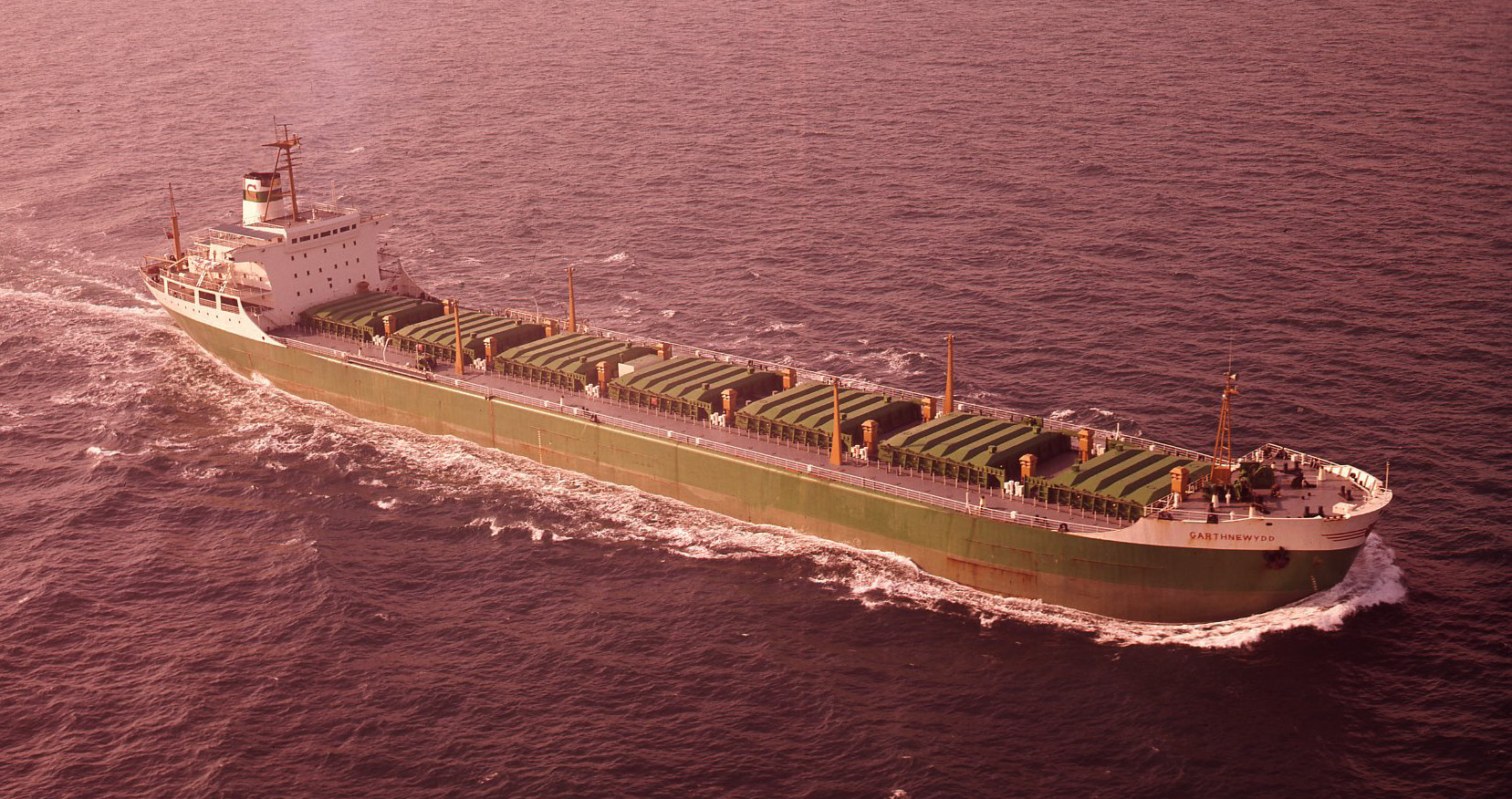
The Spanish-built Garthnewydd (2).
Further diversification in Graig’s interests came in 1975 with the introduction to the company by Philip Thomas of Maple Aggregates. This company had been founded in Brighton in 1975 in response to increasingly rigorous stipulations in the British building regulations regarding the heat-retaining qualities of building materials; it had therefore started to import pumice to the UK from the Greek island of Yali to produce building blocks with improved insulation qualities. Graig became the company’s chartering agents, initially landing cargoes of pumice in Barry and later Newport in chartered vessels; the association continues, with Immingham now the principal port of discharge.
Early 1976 saw the death of two prominent figures in the history of Graig Shipping. On 20 February Mr George F. Williams died; he was the son of one of the founding directors of the company, the shipping butcher Mr. George E. Williams. And just a month later Colum Tudball, previously the company’s managing director, passed away. In their place, Thomas Buchan Hamilton was appointed to the board; he had been employed by Graig since 1973, having previously worked for Scottish Ship Management in Glasgow.
With shipping by that date slipping back into a considerable slump, the new board decided to look at the optimum design for a bulk carrier of flexible design best-suited to future trading conditions. Based on over a decade of ownership and operation of bulk carriers, a design emerged for a geared bulk carrier of 28,500dwt, capable of accessing the Great Lakes. Six large hatches with MacGregor covers were to be served by five fifteen-ton cranes, which were also fitted with grabs. Graig’s annual report for 1976 stated that such a vessel would, ‘...be able to take advantage of freights which require vessels of limited dimensions and which will be fully capable of rapidly loading and/or discharging themselves’. The specification was duly circulated to shipbuilders world-wide and an agreement was eventually signed with the Hakodate Dock Co. Ltd. of Hakodate, Japan (builders of the Glyntaf) for the construction of two bulk carriers to the specifications outlined above, to be named Graigwen (3) and Graiglwyd (2) and to be delivered in May and October 1977 respectively.
In July 1977, the board of Graig Shipping flew out to Japan for ceremonies to mark the completion of the Graigwen and the launching of the Graiglwyd by Mrs Mary Gowen. The Graigwen was soon in service and showed herself to be the effective and economic vessel that had been hoped for, but the freight market was in a dire state, and none of the four vessels owned at that time – Graigaur, Graigffion, Garthnewydd and the new Graigwen – could trade profitably. In order to improve the company’s liquidity, the Graigaur was sold to Greek owners in September 1978 and the Graigffion was sold to South Korean interests in March the following year.
The outstanding problem, however, was that of the Graiglwydwhich in October 1978 was ready for delivery to Graig from the Hakodate yard. With outlook of the freight market still grim, and the yen strong against the dollar, it would be impossible for the company to take delivery of the vessel and afford to pay the instalments to the shipyard. Some means had to be found to either refuse, or at least delay, delivery, without breaking the contract.
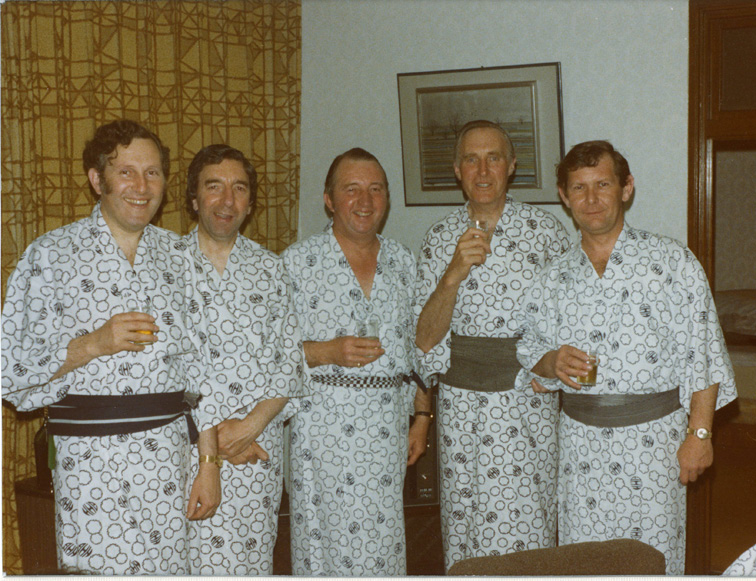
The Graig board embrace the Japanese spirit at Hakodate in July 1977
A solution was eventually found in the most unlikely manner. The building contract had stipulated that both ships had to be suitable for trading into the Great Lakes through the St Lawrence Seaway, and after completing her maiden voyage from Japan to Europe with a cargo of steel, the Graigwen made a ballast passage out across the Atlantic to load grain from the Great Lakes. The Seaway has extremely strict stipulations regarding the emission of exhaust smoke by vessels and whilst manoeuvring in the locks of the Welland Canal, the Graigwen occasionally emitted vast clouds of black smoke, to the extreme annoyance of the canal pilot. Her master, Captain Hooper, was able to placate the pilot by saying that the vessel was new, and that adjustments were required to the engine, thus avoiding a heavy fine. However, the issue of excessive exhaust fumes provided a straw at which the Graig board was able to clutch, and delivery of the Graiglwyd was refused on the grounds that the ship was clearly unsuitable for the St Lawrence Seaway. Protracted negotiations followed, with the builders threatening to take Graig to the arbitration courts to force acceptance of the vessel. Conclusive evidence came, however, at the height of the dispute when a ship photographer at Durban ‘snapped’ the Graigwen arriving at the port under a dense cloud of black smoke. Eventually, after eleven months, an agreement was reached in September 1979 whereby the Graiglwyd was sold to Hong Kong interests and the deposits paid upon her were offset against the remaining instalments on the Graigwen. Shipping is not a business for those of a nervous disposition!
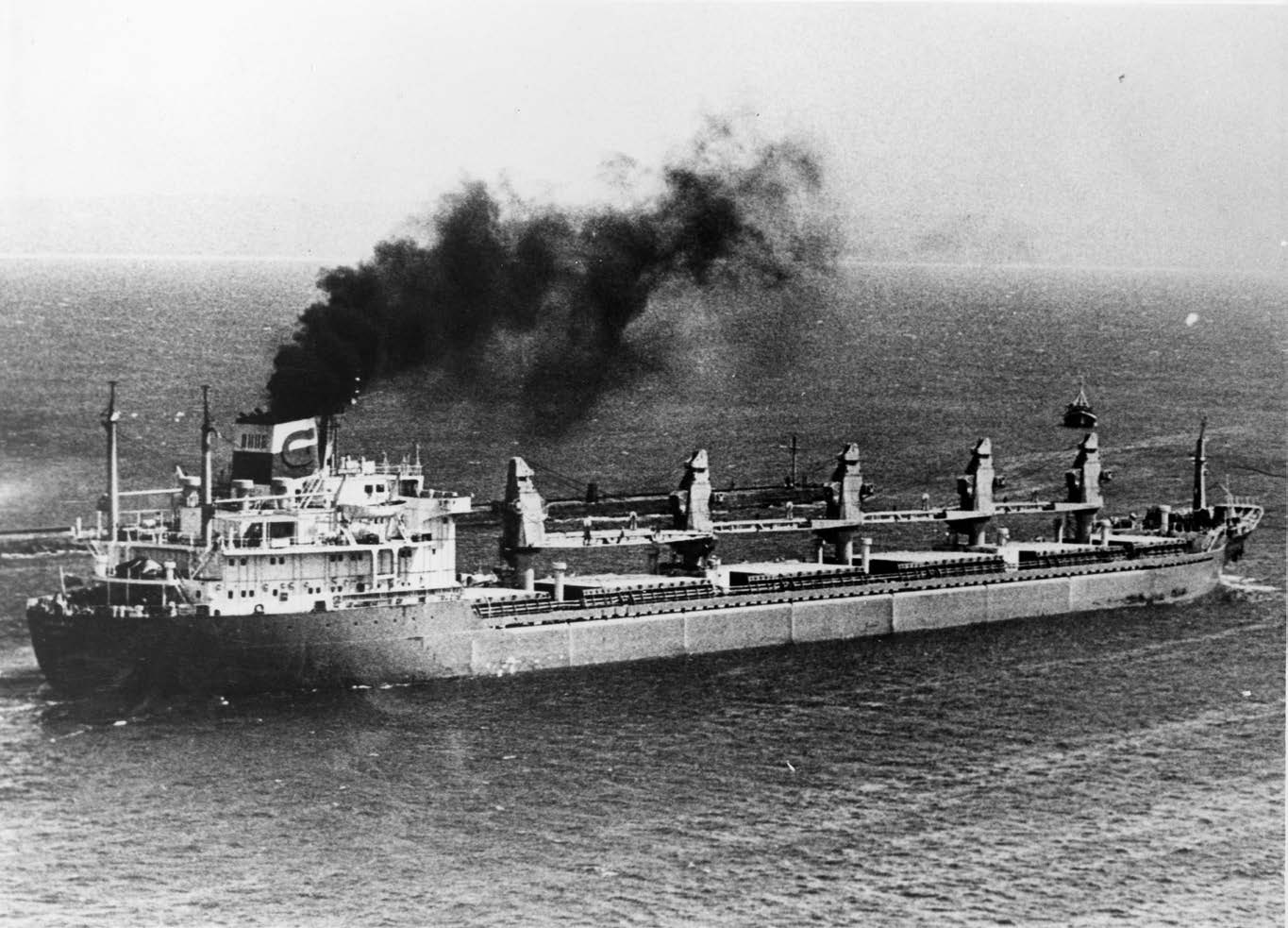
Evidence from Durban of Graigwen’s smoking problem.
